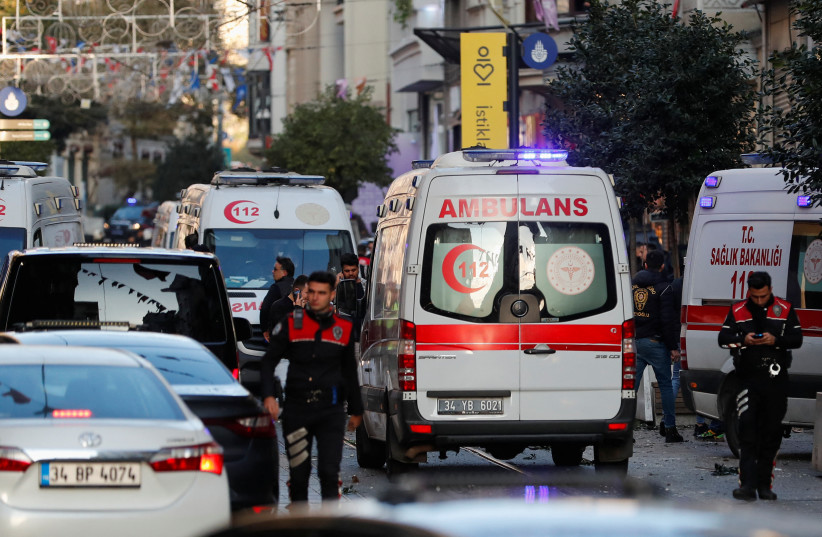Turkish authorities have been consistent in blaming Kurdish groups PKK and YPG for Sunday’s explosion attack in Istanbul. However, Turkish Interior Minister Suleyman Soylu has gone further than just blaming these groups. He alleged that the attack was planned and executed all the way from northern Syria.
The rhetoric from Ankara shifted overnight on Sunday evening when Turkish authorities were not sure the explosion was a terrorist attack, to casting a wide net of blame for who was behind it.
The Ankara narrative shift is interesting because it did not come from an assessment of the explosion and figuring out who was responsible, piecing the story like that. Rather, it has alleged blame with certainty without necessarily providing evidence for the claim.
By Monday morning, reports were circulating of a woman being detained and then released. Videos on social media showed the alleged raid on her apartment in Istanbul. The footage showed police finding rolls of clean money, too clean, and a pistol, along with a small box of ammunition, in which none of the ammunition had been taken out.
While one investigator wears blue gloves, another goes through the suspect’s items without gloves, begging questions about their methods. There wasn’t much else in the apartment, except a heater for personal use, the videos showed.

Leaked photos of the woman being detained showed her wearing a bright purple sweatshirt with the words “New York” on it, and it seemed like she was being choked by one of the men holding her in another photo.
In video screengrabs released Sunday, some social-media users already identified a woman they believed to be the suspect, a different woman wearing camouflage fatigues running from the scene and holding a smartphone.
Whereas on Sunday, the woman’s face was blurred, by Monday the image had been unblurred. This came after 12 hours in which Ankara had restricted broadcasts about the terrorist attack and tried to cut off social-media use.
While the official narrative from Ankara on Sunday evening was that the explosion in central Istanbul “could” be terrorism, by Monday morning, it had not only determined that indeed it was, but the perpetrator had been found, and every puzzle piece of the story now fit.
Turkey weaves a blame game together, targets The New York Times with anger
Turkey’s interior minister blamed the PKK, YPG and also slammed the US in the wake of the attack.
According to the authorities and pro-government media, the perpetrator entered Turkey from Afrin, an area that was Kurdish until a Turkish invasion in 2018 forced many to flee or otherwise face ethnic cleansing by the Turks.
Afrin is currently under the control of Turkish-backed Syrian rebels and also HTS, a group that was affiliated with al-Qaeda. HTS recently made territorial gains in Afrin, while ISIS members have been spotted in the area.
It’s unclear how a woman would be able to travel from Afrin to Turkey, considering Ankara built a border wall and fence and has a large security presence in the area to keep fleeing Syrians out of Turkey. This did not stop Turkey’s claims. It could be an excuse for Ankara to back HTS or other groups, increasing their hold over the area or persecuting Kurds as a scapegoat.
Turkish authorities also claimed that the attack was linked to “Ayn al-Arab,” the Arabic name of the Kurdish city of Kobani, a city known for resisting ISIS in 2014. Turkish media often uses the term “Ayn al-Arab” to erase the town’s Kurdish history.
Kobani is currently controlled by the YPG and the Syrian regime. From Ankara’s perspective, the YPG is actually the Syrian branch of the “PKK” and therefore a terrorist group. However, YPG is also part of the Syrian Democratic Forces (SDF), the anti-ISIS group backed by the US.
This complex militaristic and national reality means that when Ankara wants to blame “terrorists” for an incident, it will not just blame the PKK, but also the YPG and SDF, as well as the US.
This isn’t a new type of narrative from Ankara; Turkey’s leadership has accused the US of backing “terrorists” in Syria for years.
